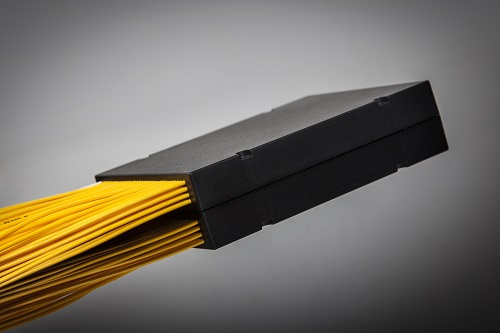- Patchcords, pigtails, accessories
- Splitters, CWDM, DWDM
- Fiber optic service
Splitter 1x128
In order to obtain many advantages through the process of designing new networks we recommend You consider using 1x128 splitters.
Technical card of splitter 1x128
I. Optical parameters of splitter with two chips 1x64 spliced together with 1x2 splitter
Splitter FBT 1x2 50/50% Premium
Splitter PLC 1x64 Standard
Spliced 1x128 Standard
b) Tables of maximum optical parameters for premium splitter without connectors
Splitter FBT 1x2 50/50% Premium
Splitter PLC 1x64 Premium
Spliced 1x128 Standard
II. Optical parameters for splitter with one chip 1x128
Spliced 1x128 Standard
III. Conclusions
In the table is clearly shown that the main difference between a premium and standard splitter is very high. Insertion loss is lower by 1,0 dB and uniformity by 0,2 dB.
b) Differance between premium splitter spliced with two chips 1x64 and splitter with on chip 1x128 without splice
In the table is crearly shown that the main difference between a premium and standard splitter is very high. Insertion loss is lower by 0,5 dB and uniformity by 0,6 dB. The difference in uniformity is so high because in splitter with one chip there is no additional splitter that would increase the maximum parameter.
Two types of splitter 1x128. First type spliced with two chips 1x64 and second with one chip 1x128. First divided by paramters into premium and standard.
|
Catalogue of products
News: NEPTUN 3U 8X and 12X patchpanel NEPTUN 3U is a 19" patchpanel designed for easy organization of optical fibers, thanks to the use of modular cassettes. more >> |
||||||||||||||||||||||||||||||||||||||||||||||||||||||||||||||||||||||||||||||||||||||||














